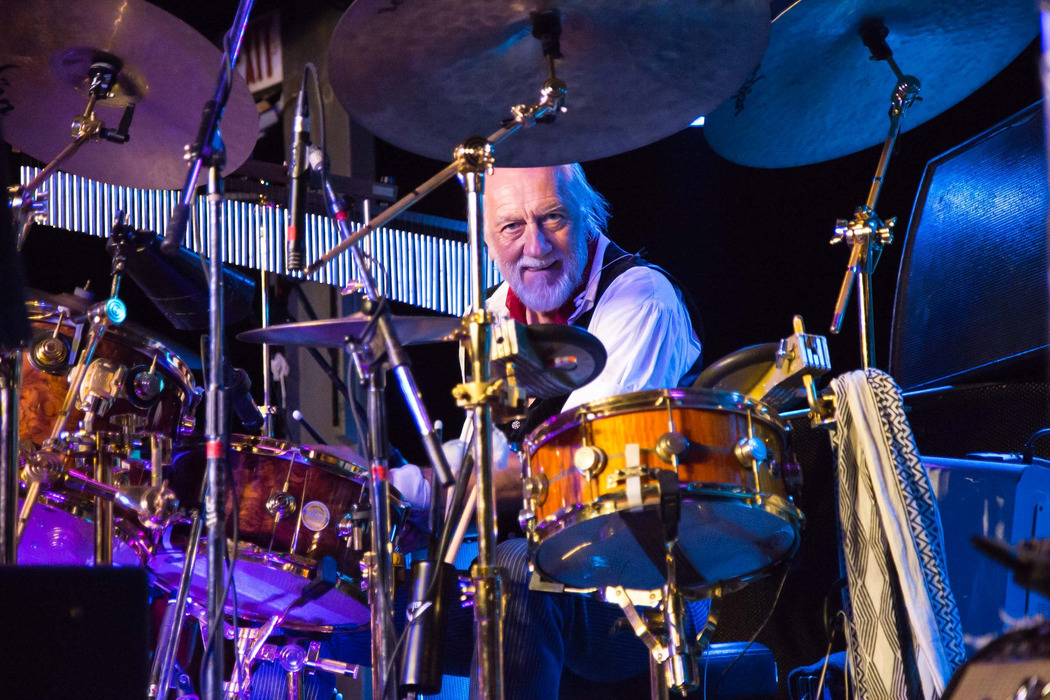
Mick Fleetwood (Photo credit: Sarah Sharaf-Eldien)
Photographer Sarah Sharaf-Eldien talks about capturing special moments at Fleetwood’s On Front Street in Lahaina, Maui, including Mick Fleetwood, Steven Tyler, and Sammy Hagar. Beyond the vivid imagery, Sarah delves into the inspiration behind her book ‘MĀLAMA MAUI: Music Photography from Lahaina’ which donates all its profits to the Maui United Way Fire Disaster Relief Fund.
How did the idea for ‘Mālama Maui’ come about to create this coffee table book?
After working with Mick Fleetwood as a photographer at his restaurant Fleetwood’s On Front St. in Lahaina, Maui, I always had the idea to publish a book of the photographs I had taken there. I felt that the archive of the intimate live performances I photographed was something really special and that I was extremely lucky to have had that unique experience. It was something that I connected with on a spiritual level, so I wanted to share what I had documented. For a few years, I worked on going through thousands of images, selecting favorites for a book.
The day before the fires, I had an emotional conversation, out of the blue, about my experience as a photographer at Fleetwood’s and what it meant to me. It was as if the universe was foreshadowing what was about to happen the next day.
After the initial shock and grief over the loss of Lahaina Town, I knew it was time to publish the book, but with a greater purpose. I wanted to honor the memory of the place that I so deeply love and to create something meaningful by doing my small part to give back to the island and support those who had lost everything in a matter of hours.
I was also inspired by Henry Diltz‘s book, Unpainted Faces, which I came across at The Morrison Hotel Gallery Maui in Fleetwood’s. The book is a rare collection of portraits of musicians that capture intimate, unguarded moments, shot mostly in natural light without makeup. I loved seeing those raw photographs at the same time that I was learning to shoot live music in low and stage lighting.
Coincidentally, when I was 14, I was obsessed with the band The Doors and had come across many of Henry’s photographs that I found and printed from websites online and in books about the band. When I began working with his gallery in Lahaina, and met him in person almost 20 years later, I was amazed by the synchronicity, and by being drawn to Maui to find this incredible place that I may have never known existed.
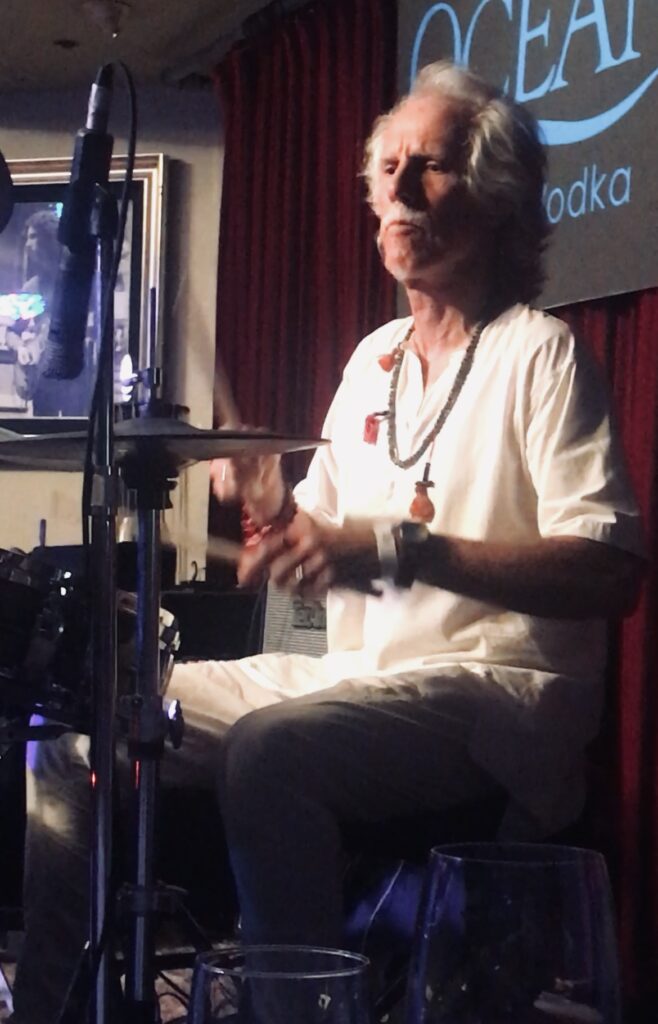
The phrase ‘Mālama Maui’ holds deep meaning in Hawaiian. How did you choose this title, and what significance does it have in relation to the book’s content and purpose?
The title ‘Mālama Maui’ was chosen to convey a deep sense of care, responsibility, and stewardship for the spirit of Maui.
In the days that followed the fire, in my grief I knew I wanted to do something to help the island and Ohana – friends, neighbors, colleagues, and the community that are considered family, based on Hawaiian values and culture. When I mentioned wanting to publish a book of photographs from my time there to my “soul sister” Emily, who I lived with in Maui, she reminded me of the meaning of ‘Mālama – which is to protect, honor, preserve, and care for. ‘Mālama Maui’ felt like the perfect title for book as it described my intention.
As I began writing the book, I naturally connected to the spiritual aspect of drumming in ancient Hawai’i, and realized that the connection between the music, the island, and the photographs held a deeply personal and spiritual meaning to me.
Maui is a sacred place where you feel very connected to the land, people, community, nature, the ocean, wildlife and all creation. For me, it is a place of self-discovery and renewal. As I write in the book; “Maui invites us to reflect on our place in the universe and our connection to the natural world, to embrace the spiritual dimensions of life, to recognize the sacredness that dwells within and around us. It reminds us that the divine is not distant, but ever-present, waiting to be discovered by those who seek it.”
The title expresses a commitment to safeguarding this special place, to cherish and honor the memories experienced there, and the cultural and spiritual connection I was seeking to share.
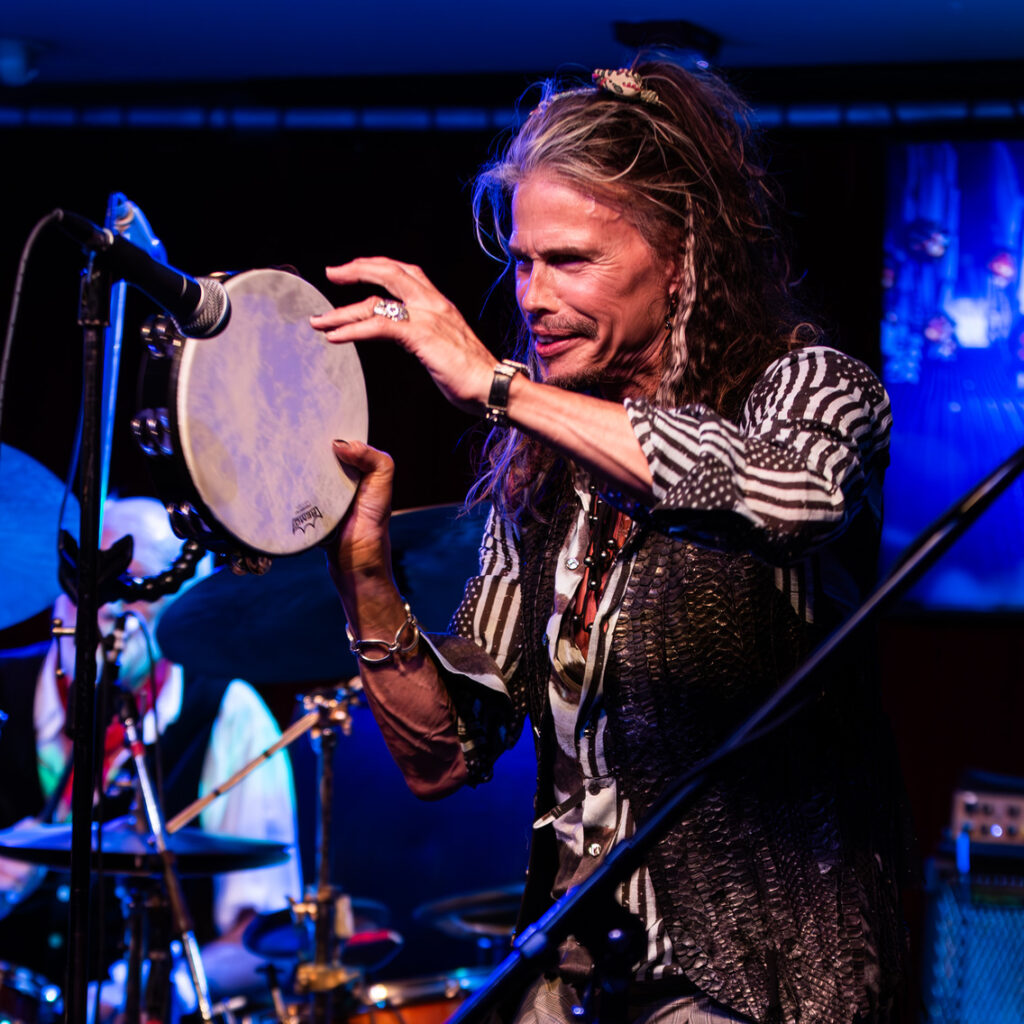
Mick Fleetwood mentioned that your photos captured the passion and joy of musicians at Fleetwood’s on Front Street. Can you share a specific moment or experience that stands out to you during your time as the house photographer?
There are so many examples, however one of my favorite experiences was New Year’s Eve of 2016. Mick Fleetwood was performing with Steven Tyler, Uncle Willie K, Rick Vito, Mark Johnstone, Gretchen Rhodes, The House Shakers, and many other musicians that dropped in, like bassist Mike Kroeger from Nickelback, on Fleetwood’s rooftop, with G-Love performing on the main level. The night was incredible, with music pouring out of Fleetwood’s ringing in the new year.
At the end of the night, many of the musicians stayed behind in Fleetwood’s basement level, Club Keller, for an impromptu jam session led by Mick on the drums.
The energy in the room was electric, with the musicians drawing from each others’ talent, passion, and enthusiasm. Watching, hearing, and documenting them while they improvised, live, revealed the sheer joy they experienced by playing and collaborating together, as well the creativity and spontaneity that naturally arises when artists connect through a deep love of their craft.
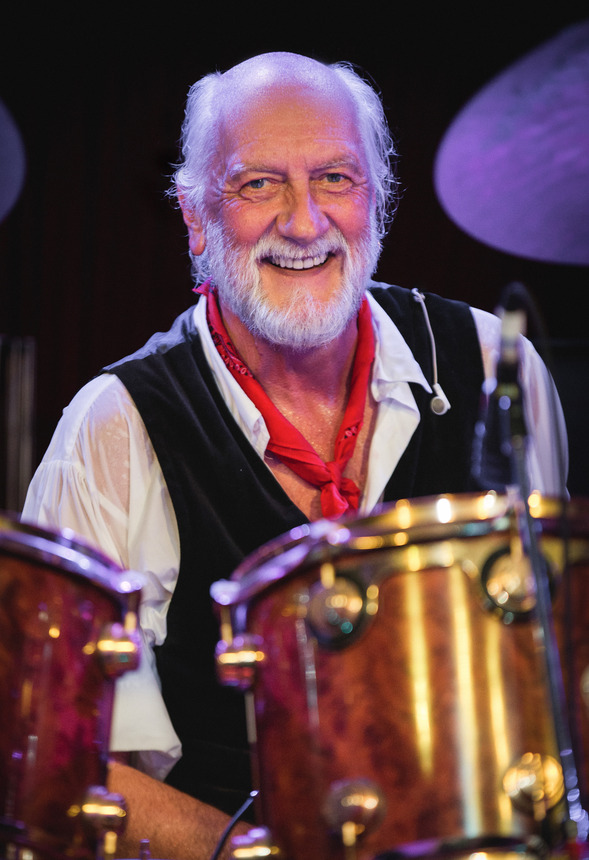
How did the devastating wildfires in Maui on August 8 impact your decision to donate to the Maui United Way, and what role do you hope ‘Mālama Maui’ plays in the rebuilding efforts?
Witnessing the widespread loss, particularly in Lahaina Town, where Fleetwood’s holds a very special place, created a sense of urgency for me to publish the book quickly in order to raise funds to support the children, families, and individuals who need our help now.
Donating the profits generated by sales of ‘Mālama Maui’ to Maui United Way is my way of contributing and advocating for that community, still struggling with the aftermath of the fires. While we still don’t know what is planned for the rebuilding of Lahaina Town, I hope that ‘Mālama Maui’ will bring a sense of healing to the community that holds such a deep significance to me and so many others.
Beyond financial support, I hope that my book also provides emotional support by allowing people to know that what happened in August 2023, and what was there in Lahaina Town, is not forgotten with time or in the midst of other news stories. I also hope that the book will serve as a enduring legacy and reminder of the intrinsic role that music and art play in the fabric and heritage of Lahaina Town.
As a photographer, how do you believe your work can contribute to preserving memories and fostering a sense of community, especially in the face of adversity?
As a photographer, my intention was to present a physical collection of art, instead of the beautiful, yet fleeting digital memories we so often see on social media. I designed my book to convey and sustain a connection to the remarkable experiences my friends and colleagues collectively encountered there, while also contributing meaningfully to the present and future well-being of the community. By turning the pages of ‘Mālama Maui’, readers who are familiar with Fleetwood’s, Lahaina Town and Maui, can not only reminisce, but also take pride in knowing that their support will be woven into the ongoing efforts to support and strengthen the community they hold dear.
The best compliments I’ve received about the book, so far, are from people who spent time at Fleetwood’s, in Lahaina, and who performed there, thanking me for keeping the memory of it alive. At a time when so many are grieving the losses, I wanted to offer my work as something that could benefit the community, emotionally, spiritually, and financially.
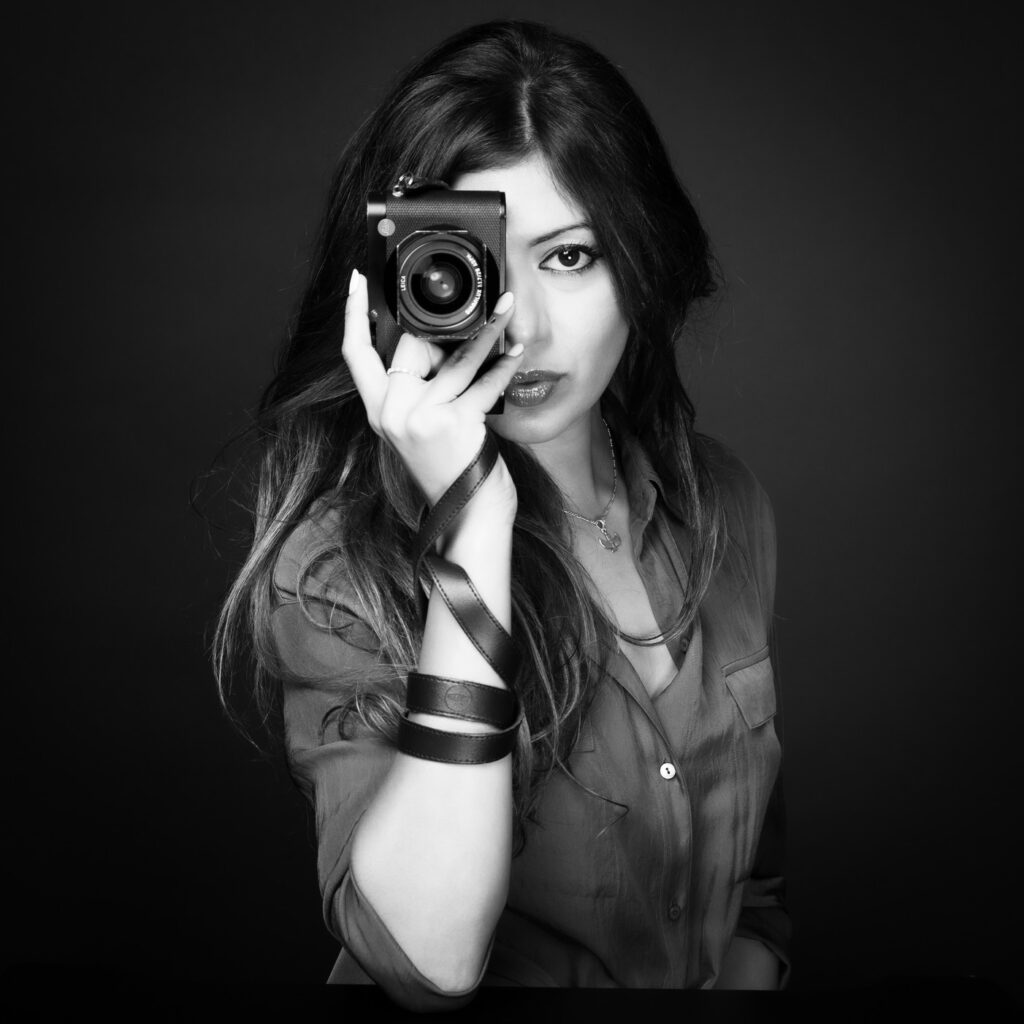
Do you have any particular photographs from the book that are favourites, and why?
I think they are all favorites, as it was really hard for me to narrow down the images to fit into the book.
If I am to mention some photographs in particular, I would say the image of Mick Fleetwood on page 40 is a favorite, because it was a very hard to get that shot. For months I’d photographed him but had never been able to fit myself into the tiny, usually non-existent space right behind him and to his right, as his drum set was set up in a corner against a wall and a window.
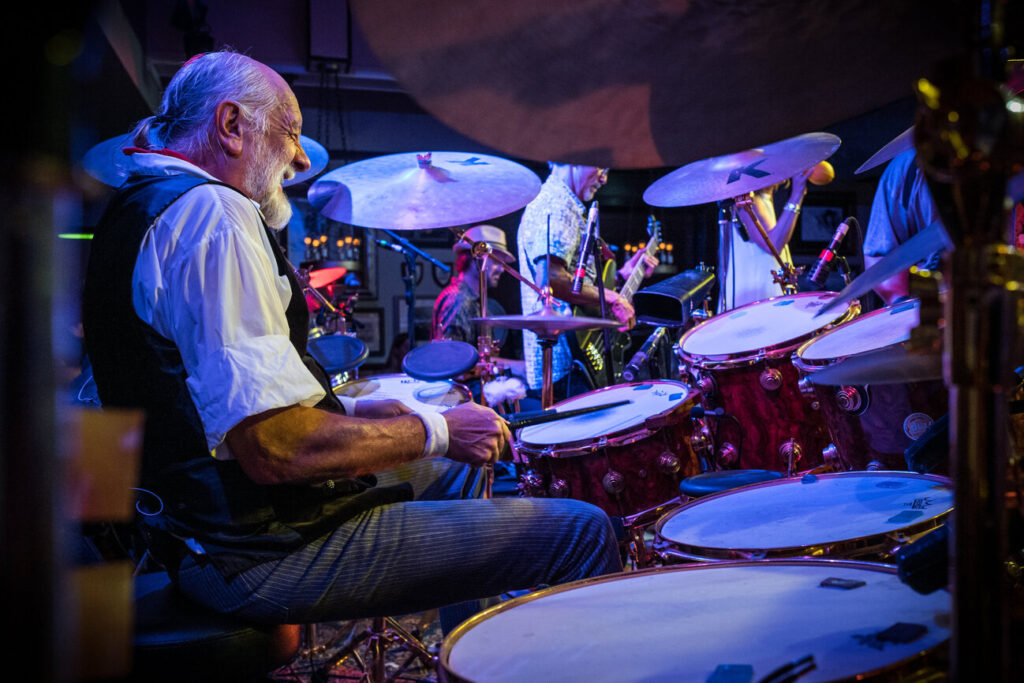
Somehow, that night, the stage was set up in a slightly different way, so I was actually able to sneak behind it and squeeze myself between the window and his drum kit. That way, I was able to get an angle of his drums and of him performing that I had never been able to capture before.
Also the look of sheer joy on Mick’s face sums up the feeling one would have will sitting in the audience at Fleetwood’s. You would almost forget that you were here on earth and not in some alternate, magical universe where the rules of reality do not apply. Every care and worry seemed to disappear, each time I entered Fleetwood’s. It was like being in a movie, like Mary Poppins, when I think back to it. It was so magical, it’s really hard to explain in words.
Some other favorite photos of mine are of the boy band, The Mockers, starting on page 101 through 107. I love those photos, because you can really get a sense of how timeless the music was at Fleetwood’s. The boys were in their mid-teens at the time, and were playing the same style of music as Mick and the other musicians there. I think those photos reveal the eternal quality of the music, what most people consider “classic rock,” with musicians of all ages engaged in a passion for the same music, in the same place, at the same time.
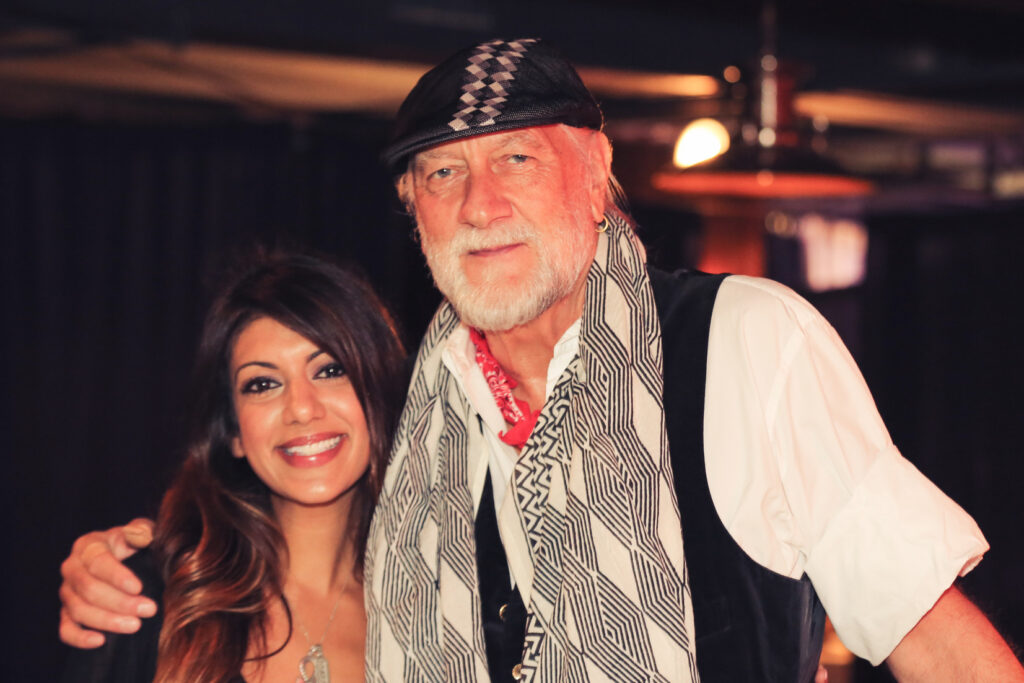
Can you tell me about your background and broader work as a photographer?
From the beginning, I have always photographed people, whether it was family members or newborns, to musicians and artists. I am especially drawn to portraits. I like to get close and have my subjects fill the frame. I’m fascinated by people’s eyes, hints about their spirit, and trying to capture something that genuinely expresses their soul.
It isn’t always easy to get someone to connect with you and drop their guard in front of a camera, or to catch a moment where they are just being themselves, and to do so artistically. I find a great challenge in doing that, and sometimes when I do get it, it’s subtle and somehow spectacular at the same time.
I think I have a way with people that makes them feel comfortable, so while we are shooting they can experiment, get playful, play a character, or drop the character. In any of these scenarios, I can almost always capture something meaningful about them.
I have always been very interested in human connection, which many studies now say is the basis for human happiness – the quality of our relationships and our connections with others. My work as a photographer allows me to connect with people in a way that is really quite different than other ways in which we connect.
I am a spiritual person, and I view my work as an extension of that. When I am working, time truly ceases to exist for me. Photography is like a meditation for me – it isn’t always easy, but it forces me into the present moment, unlike anything else.
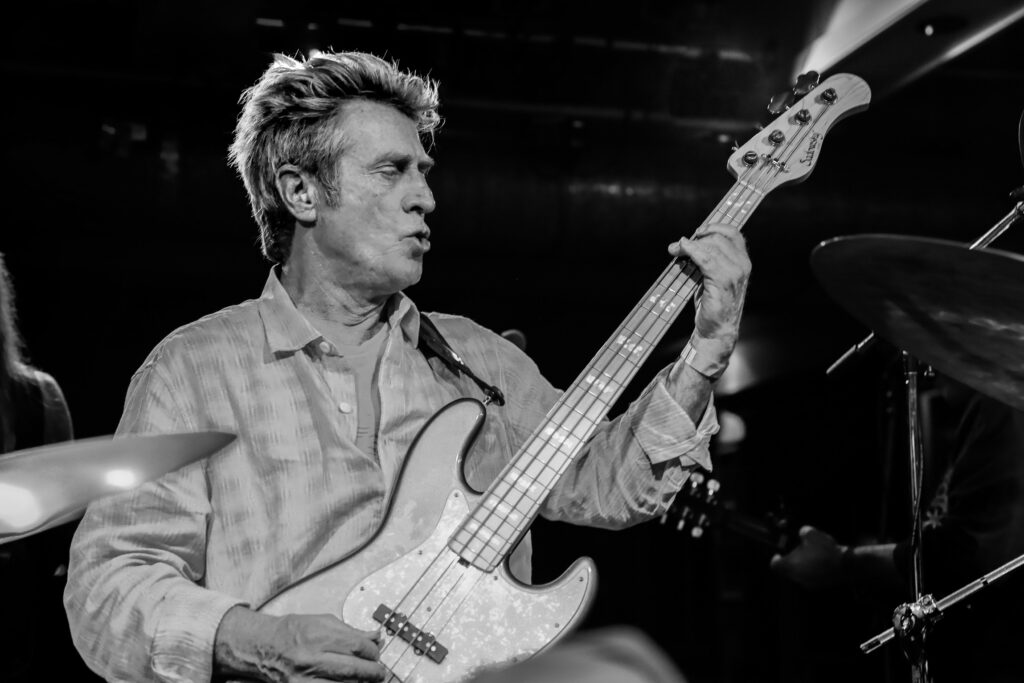
How do you know Henry Diltz and how has his work influenced you?
I met Henry for the first time at an exhibit at The Morrison Hotel Gallery in Maui, featuring a Meet and Greet with him, Mick, and Julie Gardner, who was a photographer for Neil Young. I remember Henry talking about giving the beaded necklace to Jim Morrison that appears in the “young lion” photos of Morrison, even though Diltz didn’t actually shoot those photos.
From the moment I stepped into the gallery for the first time, I knew in an instant that I was already intimately familiar with Henry’s work. Eric Waddell, the GM of Fleetwood’s at the time, was over the moon excited for me to meet Henry. It was incredible meeting and photographing him with Mick during that event.
Another strange coincidence occurred after I left Maui and moved to LA. I ran into Henry by chance at the Sayers Club, where he was shooting a friend’s son performing. He was so kind and took me rock magazine shopping at 1 am and later showed me his phenomenal archive, including some of his original prints of Jim Morrison, with a buddy. I was again truly blown away by the whole experience. For someone of his stature and the most iconic photographer that I have ever met, Henry is a really down to earth and lovely person.
His work inspired me to forget about the perfectly polished and carefully crafted images I was used to in the fashion photography world and in magazines like Vogue, and to try, instead, to capture images that were much more authentic and taken in the spur of the moment. Henry’s influence guided me to realize that what I really wanted to shoot and convey was capturing and communicating something real and present, rather than images that were artificial or superficial.
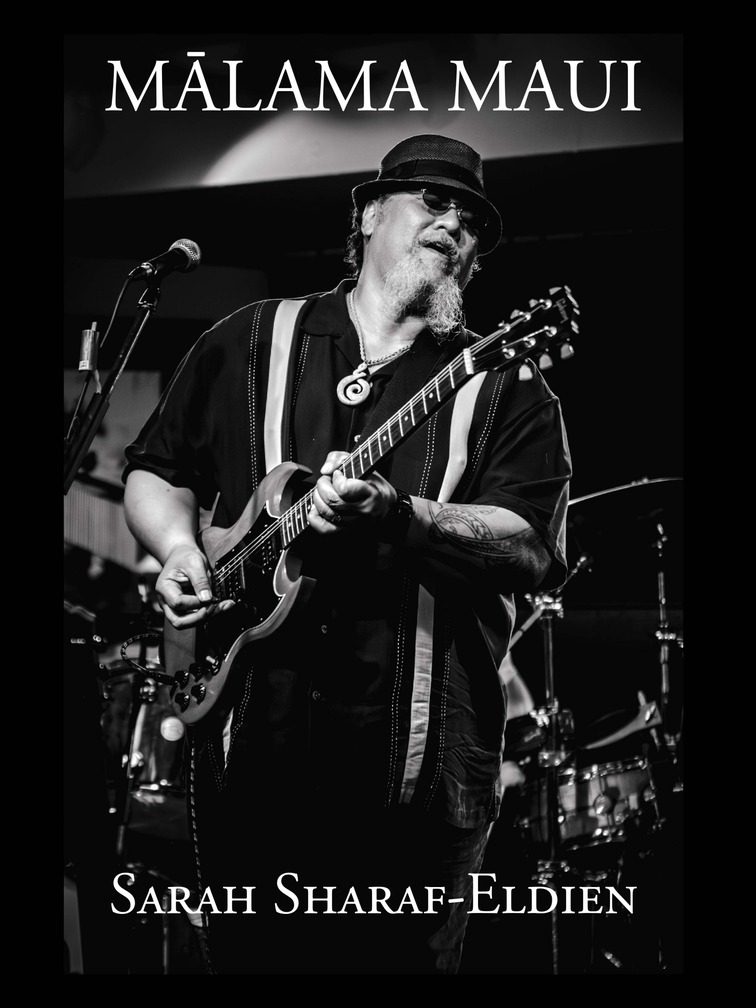
Finally, what message do you have for readers who engage with ‘Mālama Maui’ and how do you hope they respond to the unique stories and visuals presented in the book?
The message I would like readers to take away from ‘Mālama Maui’ is that there is value in living a life where you engage in your soul’s desires, instead of pursuing a job or career that will offer you what you may think is the highest financial reward, often as a result of parental or societal pressure, but that does not align with your own hopes or dreams.
Often, I have explained the riches I have gained in my heart and soul, by being who I feel I was put on this planet to be, instead of following the advice about having a “secure job,” which didn’t align with who I really am. And I have discovered that the financial reward does truly follow that – when you align yourself to your passions and pursue your own personal calling.
I believe if you sit still for awhile – run alone, float in a lake, or engage in anything that makes you feel at peace – you will know what that thing is that you are truly passionate about. It may take a long time to discover it, while for others it is obvious. It really is just a matter of having the courage to make the leap.
Honestly, I’ve never thought my photographs were “good enough,” but my passion and obsession drives me to continue practicing and perfecting my craft. With this book, and my other work, I realize that the gift I have to share through my photographs is one of great value, despite what my “imposter syndrome” may tell me in my own mind.
When I witnessed word renowned musicians becoming nervous before a show, I realized that we all have this feeling, no matter what great heights you’ve achieved, or even if you’ve been recognized by the Rock ‘n Roll Hall of Fame. When you really love what you do, you want it to the best time, every time, regardless of the size of the audience or the prestige of the client.
I use Joseph Campbell’s book, The Hero’s Journey, as an example in my book in an attempt to reveal how universal this is, as I was reading it at the exact time I was shooting for Mick Fleetwood. And, maybe not so coincidentally, another final synchronicity on Maui occurred when I was watching a documentary about Jospeh Campbell, while most of the musicians where vacationing for the summer and I took some time off to live in the jungle alone. All of a sudden, in the middle of the documentary, who appears talking about Joseph Campbell? Mick Fleetwood!
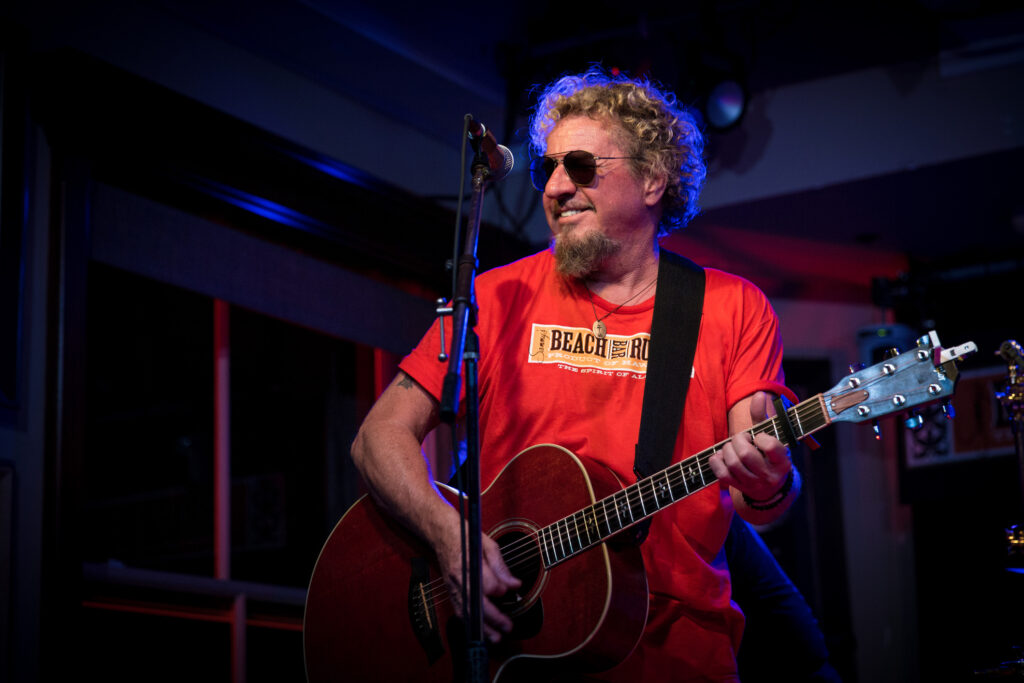
There are so many other synchronicities I left out of the book, like the first time I shot Mick’s show, with Steven Tyler and Sammy Hagar, I shot exactly 1144 images, while my photography business had been named 11:44 Photography many years earlier. It had always been a sign to me for about 10 years that I was on the right track. I believe if you ask for a sign, and really pay attention, you will receive it, and I highly recommend having the courage to follow those intuitive moments. You never know where you’ll end up, with who, and what you can create, unless you do.
And most importantly, what can you do with that to make a contribution to your fellow human beings with what you receive. I have never felt so satisfied and connected as I do now, by having the ability, through the publication of ‘Mālama Maui’ to take what I was given and to give something back.
Further information
‘Mālama Maui: Music Photography from Lahaina’ available now. See 11:44 Studios and Genius Books.
All photographs used with permission of Sarah Sharaf-Eldien.




